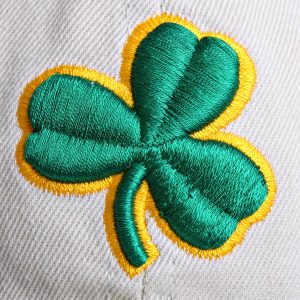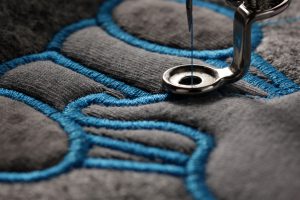
Embroidery Katy Texas
The workmanship or craftsmanship of adorning texture or different materials with needle and string or yarn is called embroidery. Embroidery has been around for centuries. Let’s take a look at the history of embroidery.
Embroidery reaches far back as the Cro-Magnon days or 30,000 BC. Fossilized embroidery survives from intensely hand-sewed and enhanced garments, boots and a cap were found.
In Siberia, around 5000 and 6000 B.C. intricately penetrated shells sewed with beautifying structures onto creature stows away were found. Chinese string weaving goes back to 3500 B.C. where pictures portray weaving of attire with a silk string, valuable stones, and pearls. Instances of enduring Chinese chain join weaving worked in silk string have likewise been found and dated to the Warring States time frame (fifth third century BC).
Decorated weaving and most other fiber and embroidery expressions are accepted to start in the Orient and the Middle East. Mankind rapidly discovered that the lines used to consolidate creature skins could likewise be utilized for frivolity. Written history, models, artworks and vases portraying occupants of different antiquated developments show individuals wearing string weaved attire.
Amid the 1100s, pearls were sewn on vellum to design religious things and from the 1200s through 1300’s dots were woven onto the dress. By 1500 A.D., weaving had turned out to be increasingly extravagant in Europe, just as different regions of the world. From this period through the 1700s detailed string and dab weaving picked up ubiquity. Extravagantly weaved dress, religious articles, and family things have been a sign of riches and status in numerous societies including antiquated Persia, India, China, Japan, Byzantium, and medieval and Baroque Europe. Conventional society procedures were passed from age to age in societies as various as northern Vietnam, Mexico, and Eastern Europe. Proficient workshops and organizations emerged in medieval England. The yield of these workshops, called Opus Anglicanum or “English work,” was popular all through Europe.

Embroidery
Embroidery was used to tailor, fix, retouch and strengthen the fabric. It later cultivated the improvement of sewing systems, and the enlivening potential outcomes of sewing prompted the craft of weaving. Expand freehand sewed string weaving started to lessen with the machine age of the 1800s when Art embroidery and Berlin fleece work showed up on the scene. Berlin fleece work, canvas string weaving, was well-known through the 1870’s just to be supplanted in prominence by tallied cross-fasten of the 1880s, utilizing square coincided canvas with join by-line string structures. With the presentation of printed designs in shading, the requirement for including each join was going in numerous cases. Albeit expand freehand string weaving was winding down in prevalence, dot weaving was starting its prime alongside the new embroidery fastens of the 1800s.
The textures and yarns utilized in customary weaving differ from spot to put. Fleece, cloth, and silk have been being used for a large number of years for both texture and yarn. Today, embroidery string is fabricated in cotton, rayon, and oddity yarns just as in customary fleece, material, and silk. Strip weaving utilizes slender lace in silk or silk/organza mix lace, most ordinarily to make flower themes.
Surface embroidery procedures, for example, chain line and framing or laid-work are the most efficient of costly yarns; framing is commonly utilized for gold work. Canvas work methods, in which a lot of yarn are covered on the back of the work, utilize more materials yet give a sturdier and progressively generous completed material.